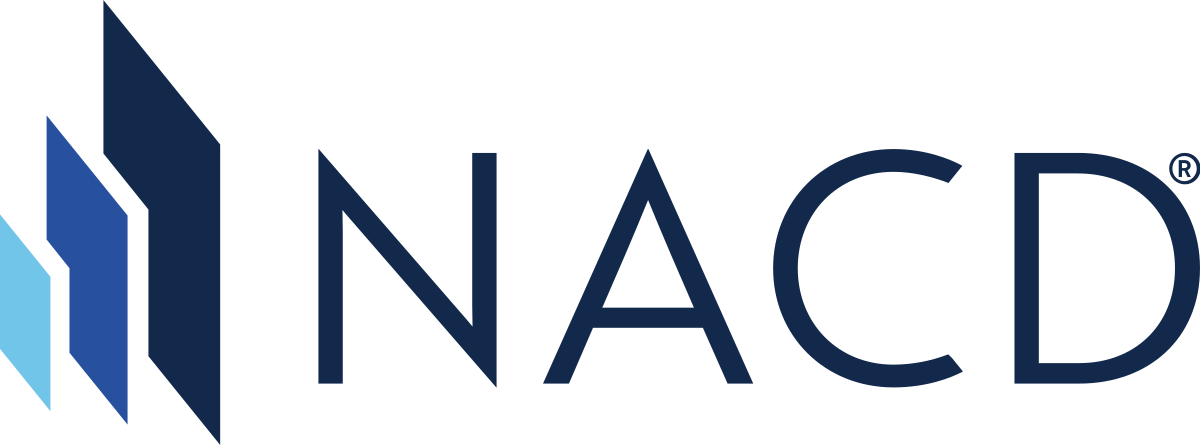
How Digital Assets Will Affect Boardroom Decisions in 2025
Archive

NACD Northern California
Contact Us
Lisa Spivey,
Executive Director
Kate Azima,
Director of Partnerships & Marketing
programs@northerncalifornia.nacdonline.org
Find a Chapter
About The Event
As digital assets continue to transform the global financial landscape, board leaders must stay ahead of this rapidly evolving space on many fronts. From blockchain technology to tokenized commodities and new asset classes, the digitization of money, assets, and investments is unlocking both significant opportunities and complex challenges that demand informed oversight and strategic leadership. With a new administration in Washington DC focused on this arena, the tax and regulatory environment could evolve rapidly. Given their duty to oversee strategy and risk, boards have a responsibility to understand this evolving and increasingly mainstream market to address the opportunities and risks that are arising for the companies they oversee.
Directors joined us for an in-depth discussion with leading experts in digital assets and investment management, along with the related legal and tax requirements. Hunter Horsley, CEO of Bitwise Asset Management, and Matthew Le Merle, CEO of Blockchain Coinvestors, provided strategic insights into how digital assets are reshaping financial systems, asset management practices, and the regulatory environment. Pillsbury Winthrop Shaw Pittman LLP Partner Megan Jones discussed legal and tax implications, with input from Pillsbury Partner, Riaz Karamali, moderator for the program. The conversation included input from Alison Davis, NACD Northern California board member and founder of Blockchain Coinvestors.
Key Takeaways Included:
Blockchain and Digital Assets Integration Overview
-
Distributed ledger technology (Blockchain) was created to solve issues of the Internet, particularly important issues like identity, trust, counterparty risk, and centralization. The Internet, with the addition of blockchain, is now characterized as a complete solution that facilitates the transition to a digital economy.
-
This digital shift was initiated by the Satoshi Nakamoto breakthrough in 2009, but 2025 is shaping up to be a pivotal year for digital assets, with increased mainstream engagement, especially with the backing of the new administration, SEC, CFTC, Congress, and White House Digital Assets Czar, David Sacks.
-
It is important for directors to understand how the industries they focus on will be affected by this technology, along with the opportunities and risks it presents. It cannot be ignored and must be discussed in boardrooms to evaluate how it will affect businesses, identify opportunities, assess risks, and understand what competitors are doing.
-
Public companies, including Block, Tesla, Semler Scientific, and Coinbase, now hold over $50 billion in Bitcoin, illustrating the growing adoption of digital assets and their increasing acceptance as a long-term store of value and hedge against inflation.
-
Fully compliant and regulated crypto ETFs are scaling up—offered by companies like Bitwise, BlackRock, and others—structured within frameworks established by federal regulators like the SEC. Established cryptocurrency custodians operate under trust charters granted by state financial regulators.
-
Blockchain enables the digitalization of every asset through a process called tokenization:
-
Every asset in the world has an owner.
-
Most assets have a paper-based approach to proving ownership, and many assets have no proof of ownership at all.
-
-
When we digitalize the ownership ‘certificate’ for an asset through tokenization, we can move the asset onto digital platforms, which provide advantages, including:
-
Transparency of ownership
-
Digital identity and provenance tracking
-
Potential for fractionalization of the asset ownership
-
24/7 global trading
-
Increased liquidity and better price discovery
-
Real-time compliance and management
-
-
Any asset can go through this process, including public equities, bonds, short-term instruments, commodities, cash, or even collectibles and art.
-
However, the digital asset that most people have already heard about is ‘crypto’ assets, which are ‘new-to-the-world’ assets on blockchain infrastructure. The most prominent among these crypto digital assets is Bitcoin, while created to be a peer-to-peer currency, Bitcoin is currently used more as a store of value (digital gold).
-
Blockchain and Tokenization – The Car and Gas Analogy: Blockchain is the “car”—providing the infrastructure and utility—while tokenization is the “gas” that powers it. Just like gasoline became valuable once the automobile was functional, tokenization makes blockchain practical by fueling its applications. Companies can choose to develop services, leverage blockchain for supply chain tracking, or decide to invest in services to capitalize on the trend. Conversations often revolve around whether to view blockchain as a software platform or a technology investment.
Use Cases for Digital Assets
-
Blockchain has many applications to businesses, which will be industry-specific. The best way for a director to think through those applications is to begin with the most important unresolved problems or growth drivers for their industry, asking how better identification, provenance, transaction speed and cost, and other attributes might resolve or improve them. It is difficult to generalize about industry-specific applications.
-
There is a lengthening list of universal use cases for blockchain and digital assets in corporate settings that are possible to generalize. These include:
-
Identity and Provenance: Blockchain can be used for verifying identity (customers, products, services) and ensuring provenance (authenticity and tracking).
-
Payments: Every business deals with receiving and transferring money to vendors. Blockchain allows for fast, 24/7 money transfers at sub-penny prices, with settlements in seconds.
-
Treasury and Balance Sheet Management: Bitcoin is now being considered as an option for the base layer in the balance sheet.
-
Investment Programs, including Pension Funds: Blockchain has the potential to improve transparency, liquidity, and management in financial reporting and pension funds.
-
-
Blockchain provides a secure and cost-effective way to transfer value, streamlining transactions globally. Stablecoins such as USDC and USDT have scaled up significantly in the last year. Some asset management firms, wealth advisors, and banks are either now providing their clients access or are in the process of approving to do so.
-
Stablecoins enable near real-time, almost free global payments and more than 400 million people are using them already. 2024 stablecoin transaction volumes were over $7 trillion (close to Visa or MasterCard).
-
Bitcoin has been the world’s highest-performing asset since its inception and is increasingly seen as a way to drive performance in a portfolio. More than 70 public companies, including Block, Tesla, Semler Scientific, and Coinbase, now hold over $50 billion in Bitcoin.
Changing Legal Landscape
-
The executive order issued earlier this year by the White House signals a shift toward more favorable regulation for digital assets. It aims to create a more structured regulatory environment, allowing businesses and investors to navigate digital assets with greater consistency and clarity in the coming years.
-
The SEC has shifted its stance, halting litigation against companies like Coinbase and Kraken while ending investigations into companies such as Robinhood and Uniswap, signaling a potentially more collaborative approach.
-
The new administration has revoked SAB 121, easing reporting requirements for banks holding crypto assets. Historically, the IRS has classified digital assets as property for tax purposes. Meanwhile, the SEC has considered them to be securities, leading to confusion. Recently proposed legislation will hopefully clarify such current legal ambiguity.
-
Bills in the House and Senate are seemingly moving forward, with some addressing cryptocurrency and stablecoin regulation. The IRS DeFi Broker Rule, which would have required decentralized entities to report user information, has been subject to bills passed in both the Senate and House of Representatives. Still pending is whether the two bodies can reach an agreement on final legislation.
Advice for the Boardroom
-
Diversity of Viewpoints: Ensure your board includes individuals who are open to new technologies and can evaluate both risks and opportunities.
-
Engage Advisors: Bring in third-party experts to educate the board on the specific risks and opportunities blockchain presents to your industry.
-
Future Planning: The disruption caused by blockchain and other compounding new technologies will be exponential. Consider how digital assets might reshape your industry in the next 5-10 years. Begin with the biggest problems your company and industry have to solve, and ask if new innovation can do so. Scenario planning is key—how will your company respond to slow versus rapid adoption of digital asset technology? How will digital assets impact customers, suppliers, competitors, and the company’s long-term strategy? If we choose not to hold digital assets, how will we justify this decision to shareholders, particularly if other companies in the industry are adopting them?
-
Understand External Partnerships: Consider how your company interacts with external parties (vendors, clients, service providers). Could blockchain play a role in improving efficiency or transparency in these relationships?
-
Customer-Centric Innovation: Think about what blockchain can enable for customers, such as faster, cheaper, or more innovative services, especially appealing to younger generations.
-
Build or Buy Strategy: Companies must decide how to build understanding and capabilities in digital assets—through hiring, training, partnerships, or acquisitions.

Thank you to our generous sponsor for making this event possible.
NACD Northern California
Contact Us
Lisa Spivey,
Executive Director
Kate Azima,
Director of Partnerships & Marketing
programs@northerncalifornia.nacdonline.org
Find a Chapter
